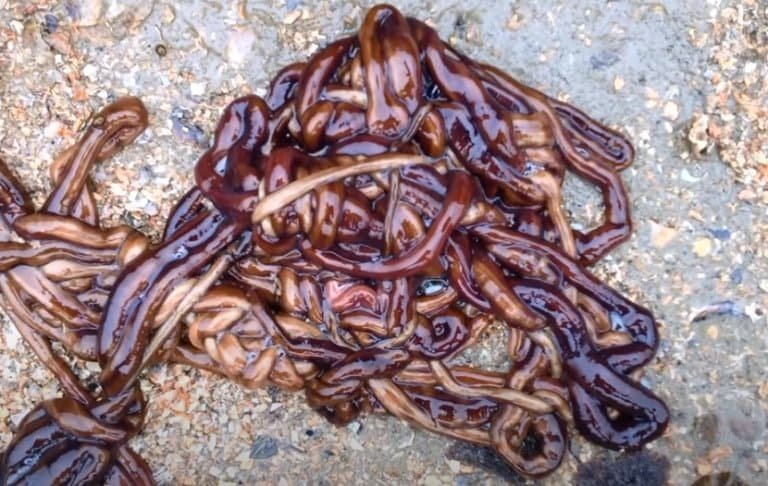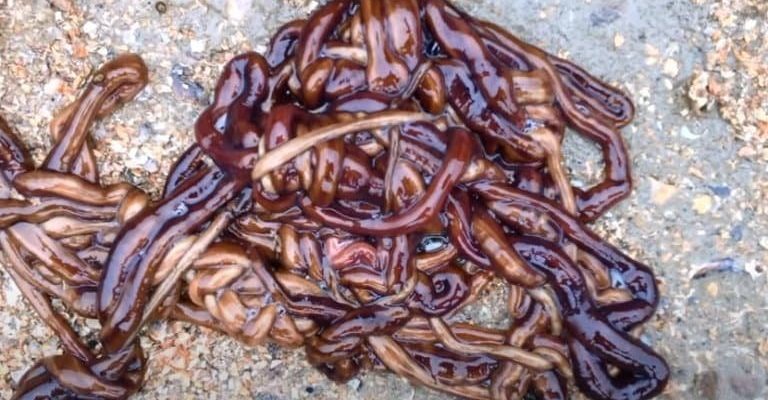
Think of it like this: if digestion were a party, most animals would have a designated room (the stomach) where the guests (food) get processed. Bootlace worms, on the other hand, host the whole event in a more free-flowing manner. They go for a more open-plan approach, breaking down food as they go. So how exactly does this work? Let’s unravel the tale of these long, slippery creatures and their unique digestive system.
What Makes Bootlace Worms So Special?
Bootlace worms are part of a group called *Nemertea*, also known as ribbon worms. They stand out not just for their impressive length, but also for their ability to regenerate lost body parts. This means that if a bootlace worm gets cut in half, it can grow back the missing piece. Isn’t that wild?
One of the most essential characteristics of bootlace worms is their **proboscis**. This is a specialized structure that can shoot out and grasp prey, similar to a tongue, but much more versatile. This means that when a bootlace worm spots a meal, it doesn’t just eat in the usual way; it grabs the food and injects it with powerful digestive enzymes. This method is not just effective; it’s completely necessary for a creature without a traditional stomach.
How Do Bootlace Worms Capture Their Prey?
You might be wondering, “How do they catch their food without a stomach?” Bootlace worms are pretty crafty hunters. They primarily feed on small marine organisms, including crustaceans and even smaller worms. Their proboscis acts like a weapon, ejecting into the water and snatching up unsuspecting prey in seconds.
Once they’ve caught something, they don’t munch it down right away. Instead, they secrete digestive juices that begin to break down their meal externally. Imagine it like marinating food before cooking. They essentially “pre-digest” their meals outside their bodies! This enzymatic cocktail breaks down the cells of their prey, which allows the worm to absorb the nutrients right through its skin, or epidermis.
The Science Behind External Digestion
So, how does this external digestion work? When bootlace worms release their digestive enzymes, they essentially turn the food into a soup. This soup can then be absorbed directly by their body. The **epidermis**, or outer skin, is extremely thin and permeable, making it easy for nutrients to escape from the dissolved food.
This process is efficient for bootlace worms because they often find themselves in environments where food can be scarce. By digesting their prey externally, they minimize the risk of losing out on nutrients. It’s a brilliant strategy—albeit a bit different from what many other animals do.
Why Is This Adaptation Important?
Now, you might ask: “Why has the bootlace worm evolved this way?” The answer lies in survival. These worms often inhabit areas of the ocean floor where food is not always plentiful. Having a **flexible and efficient** digestive system allows them to make the most of whatever they can catch.
This adaptation helps them save energy too. Instead of spending time actively breaking down food inside a stomach, they let nature do the work for them while they focus on hunting and avoiding predators. It’s almost like being able to multitask while others are tied down to the kitchen.
Comparing Bootlace Worms to Other Creatures
When you think about the animal kingdom, there’s quite a bit of diversity in how creatures digest their food. For instance, humans have complex digestive systems, including a stomach and intestines. On the flip side, some simpler organisms like jellyfish also digest food externally, similar to bootlace worms.
This raises an interesting comparison. While humans rely on a more advanced system to process meals, bootlace worms take advantage of their simple, yet effective means to thrive in their environment. They may not have a stomach, but they’ve found a way to make it work for them, proving that there are many paths to success in nature.
What Can We Learn from Bootlace Worms?
The bootlace worm offers valuable insights into adaptability and survival. Its unique method of digestion is a reminder of the incredible ways life finds a way to thrive. Nature often reveals creative solutions to challenges, and the bootlace worm is a perfect example.
These worms remind us that sometimes, thinking outside the box (or in their case, outside the stomach), can lead to innovative ways to tackle problems. It’s about making the best out of what you’ve got, whether in the wild or in our daily lives.
Understanding how bootlace worms digest prey without a true stomach opens up a whole new world of appreciation for marine life. These worms are not just long and slippery; they embody the beauty of adaptation and survival in the ocean’s complex ecosystem. So, the next time you encounter a bootlace worm or read about it, remember that there’s a fascinating story to tell about how these remarkable creatures have mastered the art of living without a stomach.
Nature is full of surprises, and bootlace worms are a great example of how evolution can shape unique ways of life.

